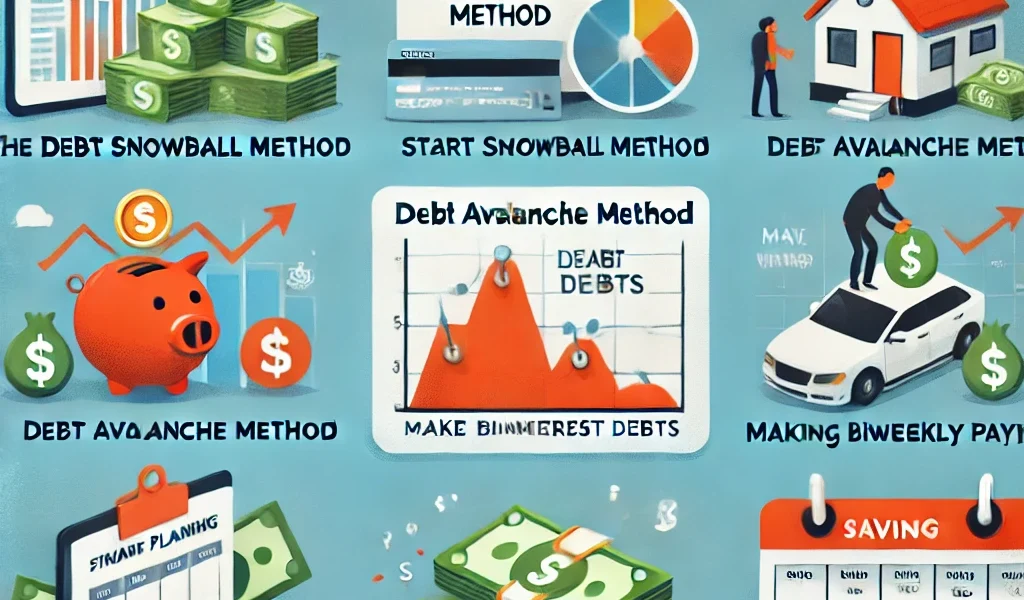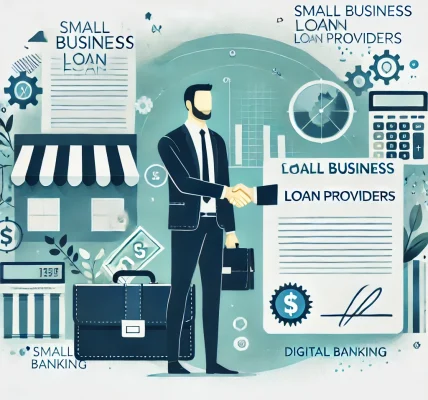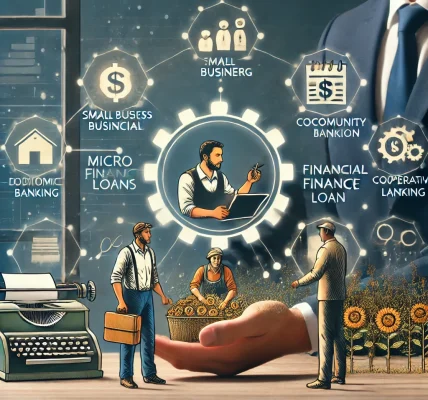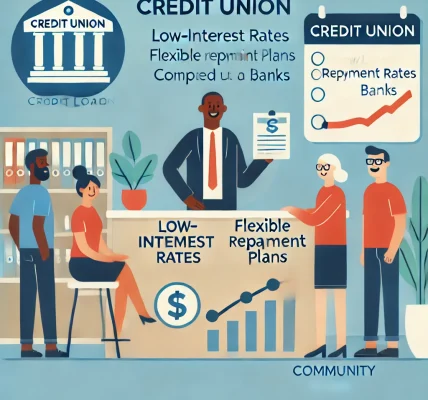Introduction
Managing loan repayments efficiently is crucial to maintaining financial stability and reducing debt burdens. Whether you have student loans, personal loans, credit card debt, or a mortgage, developing a smart repayment strategy can help you pay off your debt faster while minimizing interest costs.
In this guide, we’ll explore practical loan repayment strategies that can help you clear your debt efficiently, save money, and improve your financial health.
Understanding Loan Repayment
Loan repayment involves paying back borrowed money along with interest over a specified period. The total repayment amount depends on the loan term, interest rate, and repayment plan. Making strategic decisions can shorten the repayment period and reduce the overall financial burden.
Key Factors That Affect Loan Repayment
- Interest Rate: Higher interest rates result in higher repayment costs.
- Loan Term: A longer-term loan leads to lower monthly payments but higher total interest paid.
- Monthly Payment Amount: Increasing monthly payments reduces the loan term and interest paid.
- Loan Type: Secured loans (mortgages, auto loans) and unsecured loans (personal loans, credit cards) may have different repayment terms and interest structures.
Effective Loan Repayment Strategies
1. Pay More Than the Minimum Amount
Most loans come with a minimum monthly payment, but paying only the minimum can extend the repayment period and increase interest costs. By increasing your monthly payment amount, you can pay off your loan faster and reduce the total interest paid.
How to Implement:
- Allocate extra funds from bonuses, tax refunds, or side income toward loan payments.
- Set a goal to pay an additional amount each month beyond the minimum due.
2. Follow the Debt Snowball Method
The Debt Snowball Method involves paying off the smallest debt first while making minimum payments on larger debts. Once the smallest debt is cleared, you roll the payment into the next smallest debt, creating a snowball effect.
Benefits:
- Provides motivation by achieving small wins early.
- Encourages discipline and consistency in debt repayment.
3. Use the Debt Avalanche Method
The Debt Avalanche Method prioritizes paying off debts with the highest interest rates first while making minimum payments on others. This method reduces the total interest paid over time.
Advantages:
- Saves more money in interest costs compared to the Snowball Method.
- Helps clear high-cost debt efficiently.
4. Refinance Your Loan
Refinancing involves replacing an existing loan with a new loan that has a lower interest rate or better terms. This strategy is particularly useful for student loans, mortgages, and auto loans.
Steps to Refinance:
- Compare lenders to find lower interest rates.
- Ensure there are no high prepayment penalties.
- Consider loan consolidation for multiple loans.
5. Make Biweekly Payments
Instead of making one monthly payment, you can split your payment into two biweekly payments. This results in 26 half-payments per year, which equates to 13 full payments instead of 12.
Benefits:
- Shortens loan term by a few months or years.
- Reduces interest paid over time.
6. Automate Your Payments
Setting up automatic payments ensures that you never miss a due date, helping you avoid late fees and improving your credit score.
Why It Works:
- Prevents late payments and penalties.
- Some lenders offer discounts for enrolling in autopay.
7. Cut Unnecessary Expenses and Redirect Savings
Reducing discretionary spending can free up funds for loan repayments.
Cost-Cutting Ideas:
- Cancel unused subscriptions.
- Limit dining out and cook at home.
- Avoid impulse purchases.
8. Consider a Balance Transfer (For Credit Card Debt)
If you have high-interest credit card debt, transferring the balance to a card with a 0% introductory APR can provide temporary relief and allow faster repayment.
Caution:
- Be mindful of balance transfer fees.
- Pay off the transferred balance before the promotional period ends.
9. Increase Your Income Sources
Boosting your income can accelerate debt repayment. Consider options like:
- Taking a part-time job or freelance work.
- Selling unused items.
- Investing in skill development for better-paying opportunities.
10. Negotiate with Lenders for Better Terms
Lenders may offer lower interest rates, extended repayment terms, or temporary relief options based on your financial situation.
How to Approach:
- Contact your lender to discuss alternative repayment options.
- Request a temporary forbearance or deferment if facing financial hardship.
Common Mistakes to Avoid in Loan Repayment
- Skipping Payments: This leads to late fees, penalties, and potential damage to credit scores.
- Relying Only on Minimum Payments: Extends the loan term and increases total interest costs.
- Ignoring Interest Rates: Failing to prioritize high-interest loans can lead to significant financial strain.
- Not Reviewing Loan Terms: Some loans have prepayment penalties, so always check before making extra payments.
Conclusion
Paying off loans faster requires discipline, strategic planning, and financial awareness. By implementing smart repayment strategies such as the Debt Snowball Method, Debt Avalanche Method, refinancing, and extra payments, borrowers can minimize interest costs and achieve financial freedom sooner.
Assess your financial situation, choose the best repayment strategy that fits your needs, and stay committed to your goal of becoming debt-free.




